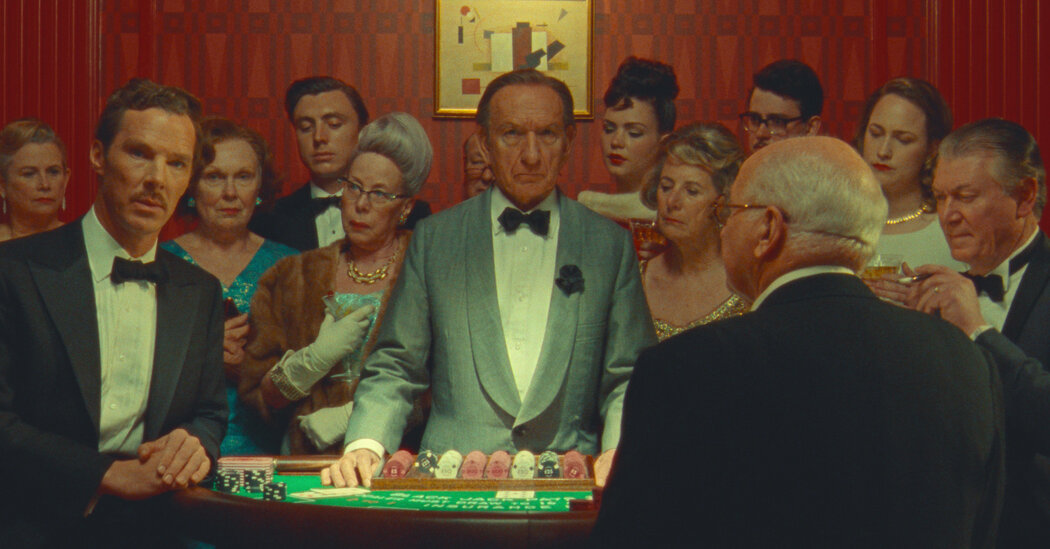If it’s epic cinema you seek this fall, many marathons await: Martin Scorsese’s sprawling Oklahoma murder ballad “Killers of the Flower Moon” (3 hours 26 minutes); Ridley Scott’s lush and bloody biopic “Napoleon” (2 hours 37 minutes); the ambitious, Jennifer Lawrence-less “Hunger Games” prequel “The Ballad of Songbirds and Snakes” (2 hours 45 minutes). Even “Taylor Swift: The Eras Tour,” that musical behemoth slinking from stadiums to screen, commands a rigorous 2 hours and 48.
Flip the telescope though, and movies are also getting very, very small. In the discombobulated midst of a strike and a festival season, stand-alone shorts — a category generally confined to film-nerd niche or career steppingstone — have suddenly emerged as the passion projects of several name-brand auteurs. Why well-established directors would pivot to a format not exactly famed for its commercial viability feels like something of a mystery, but the presence of enthusiastic benefactors may offer a clue: a vaunted French fashion house, a streaming giant, a Soderbergh.
The participation of Netflix provides an unusually broad platform for Wes Anderson, who has perhaps most committed to the bit; “The Wonderful Story of Henry Sugar” serves as the quixotic centerpiece of his four-part collection inspired by the endlessly adaptable British novelist Roald Dahl and unrolled on the site over consecutive days in late September.
“Henry Sugar,” about a wealthy wastrel (Benedict Cumberbatch) who finds his purpose in the mystical third-eye teachings of an eccentric yogi (Ben Kingsley), seems designed to fit Anderson’s gifts as a jewel-box maximalist. The starry cast runs full force with his nesting-doll plots and deadpan drolleries, the color palette comes saturated in a Pantone riot of blues, pinks and egg-yolk yellows, and the tone flips nimbly from tender to absurd, more Dahl sweetness than arsenic.
At 39 minutes, “Henry Sugar” is easily the longest and most elaborate in the series, and the only one to get a limited release in theaters (with admissions priced accordingly, between $5 and $8). It’s also probably the closest to a sure-thing Oscar nominee, a recognition that may or may not extend to the lovely but evanescent “Asteroid City,” Anderson’s winsome feature-length dip into retrofuturism from earlier this year.
Pedro Almodóvar, the resident romantic surrealist of Spanish cinema, seems to have less lofty goals for “Strange Way of Life,” his featherweight dollop of fashion-cowboy whimsy presented and costumed by the venerable Parisian label Saint Laurent. (It’s not the brand’s first foray into film; they backed the perennial French provocateur Gaspar Noé’s demented 2019 short “Lux Aeterna,” which also had its premiere at Cannes.)
The plot, such as it is, rests purely on gestural melodrama, with a “Brokeback Mountain” twist: A stoic sheriff, Jake (Ethan Hawke), and his onetime fellow gunslinger and secret paramour, Silva (Pedro Pascal), are reunited after 25 years apart. The passion between them — also telegraphed by handsome young doppelgängers in lusty flashbacks — still burns, but it’s complicated by the criminal urges of Silva’s violent, petulant son (George Steane).
Almodóvar’s gaze is more like a series of fun house mirrors here, passing through classic dime-store-novel narrative, the macho-man canon of midcentury Technicolor westerns and the winky camp of queering it all in circa-2023 couture. (Pascal’s Kelly-green jacket, the production notes take pains to point out, is a tribute to one James Stewart wore in 1952’s “Bend of the River,” though its bedazzlement tilts more Ibiza disco than dusty frontier).
For all the novelty of watching two midlife male movie stars declare their love and linger in bathtubs, “Strange” feels teasingly incomplete at 30 minutes, galloping off before it’s hardly begun. It seems smart, then, that it’s being paired theatrically with Almodóvar’s other recent English-language experiment, the more substantial 2020 short “The Human Voice,” featuring Tilda Swinton as a woman undone by her departing lover (it opens Oct. 4).
The luxe artifice of those films feels several galaxies removed from Godfrey Reggio, the former monk turned avant-garde documentarian whose pointed social consciousness and wordless, kaleidoscopic catalog has made him a sort of gnomic godhead for devoted cinephiles and stoners alike. But Hollywood still finds its way to the Santa Fe octogenarian’s door: Steven Soderbergh, a fan since 1983’s seminal “Koyaanisqatsi,” is listed as executive producer on the 52-minute “Once Within a Time,” and will travel to several cities to promote it. (Reggio is also the subject of a MoMA retrospective with his longtime collaborator, Philip Glass, that runs through Oct. 4, where the new short plays daily before releasing more widely in theaters.)
Set to a clamorous Glass score, “Once” unleashes a whirling torrent of images, churned into a daguerreotype steampunk fever dream: merry-go-rounds, mushroom clouds, screaming chimpanzees in VR headsets. Mike Tyson appears as a benevolent wizard, and the climate activist Greta Thunberg as a stern bobblehead. “Is it the sunset or the dawn?” an interstitial card demands, as sand runs through a monolithic hourglass; both hope and apocalypse are heavily implied. At 83, Reggio probably knows more than most about the tyranny of time; onscreen at least, if not in life, new rules can be applied.


